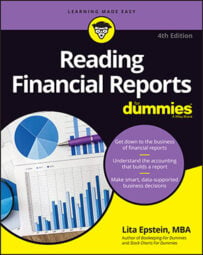You may not think of pension and other retirement benefits on financial reports as types of debt, but they are. In fact, for most companies that offer pension benefits, the amount of money they owe their employees is higher than the amount they owe to bondholders and banks.
Some companies offer both pensions (which are an obligation to pay retirees a certain amount for the rest of their lives after they leave the company) and other retirement benefits (which include contributions to retirement savings plans such as 401(k)s or profit-sharing plans).
When looking at the note about pensions and other retirement benefits, find out which type of plan the company offers:
Defined benefit plan: The company promises a retirement benefit to each of its employees and is obligated to pay that benefit. This type of plan includes traditional retirement plans, in which employees get a set monthly or annual benefit from the company after retirement.
Defined benefit plans carry obligations for the firm for as long as an employee lives — and sometimes for as long as both the employee and his spouse live. Determining how much that benefit will cost in the future is based on assumptions regarding how much return the company expects from its retirement portfolios and how long its employees and their spouses will live after retirement.
As people live longer, pension obligations become much greater for companies that offer defined benefit plans. Many companies are phasing out this type of retirement benefit.
Defined contribution plan: The employer and employee both make contributions to a retirement plan. A 401(k) is an example of a defined contribution plan. The company isn't required to pay any additional money to the employee after the employee retires and pulls her retirement funds from the company's plan, rolling the funds into individual retirement savings or an annuity option.
An annuity is a type of insurance policy that guarantees a set payment based on terms set up at the time the annuity is purchased.
In the notes to the financial statements, you find a calculation of the expected pension expense, the funding position of the plan, and the expectations for the future obligations of that plan based on complicated assumptions figured by an actuary (a statistician who looks at risk factors to make assumptions about the company's long-term pension obligations). Insurance companies use actuaries to determine costs for life, health, and other insurance products.
In the pension and retirement benefits note, you find a chart that shows the annual payments the company is currently making to retirees. If you see these payments increasing rapidly each year, it may be a sign of a long-term problem for the business. Companies need to provide a table that shows the current plan assets at fair value and projects their ability to meet pension obligations in the future.
You need to compare certain figures that companies use in calculating their estimates for pension obligations. Companies in similar industries typically use similar assumptions. Numbers to watch include the
Discount rate: The interest rate used to determine the present value of the projected benefit obligations
Rate of return on assets: The long-term return the company expects to earn on the assets in the retirement investment portfolio
Rate of compensation increases: The estimate the company makes related to salary increases and the impact those increases have on future pension obligations
Each of these rates requires assumptions about unknown future events involving the state of the economy, interest rates, investment returns, and employee life spans. A company can do no more than make an educated guess. To be sure that the company's guesses are reasonable, all you can do is check that it makes guesses that are similar to the guesses of other companies in the same industry.
Also look for information in the notes about whether the company's retirement savings portfolio is sufficient to meet its expected current and future pension obligations. This information is usually shown in a chart as part of the note. If the company's retirement savings portfolio falls short, it may be a red flag for future cash-flow problems.

